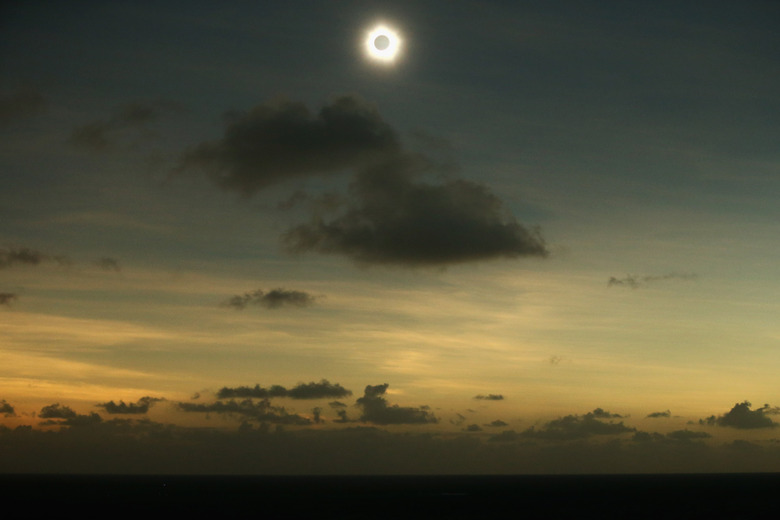Facts About The Chromosphere Of The Sun
The chromosphere is one of the outer layers of the sun. It is directly above the photosphere, which is the layer that humans see from the surface of Earth. The chromosphere gets its name from its color, which is a deep red. Helium was discovered through viewing the chromosphere emission lines during a solar eclipse in 1868.
Seeing Red
Seeing Red
The chromosphere gives off a light called a hydrogen alpha emission, giving it the red color. The light it projects is faint compared to the bright light given off by the photosphere. Most people can only see the chromosphere during a solar eclipse. Scientists are able to observe the chromosphere using special equipment. They filter out all other wavelengths given off by the sun to observe the chromosphere wavelengths of light.
Chromosphere Properties
Chromosphere Properties
The chromosphere is a thin layer, about 2,000 to 3,000 kilometers (1,243 to 1,864 miles) thick. Its temperature is 6,000 to 50,000 degrees Celsius (10,800 to 90,000 degrees Fahrenheit), increasing with altitude. Scientists speculate that the temperature increases with altitude due to magneto-hydrodynamic waves. The magnetic field lines in the chromosphere apparently become displaced and oscillate when they return to their original shape. This oscillation creates a wave of energy that increases the temperature of the chromosphere with altitude.
Supergranule Cells
Supergranule Cells
Supergranules are large bright and dark areas in the chromosphere. They are much larger than the granules observed in the photosphere. The magnetic field of the sun clusters in the supergranules. This makes a web of magnetic field lines on the sun. When the magnetic field lines cross and bunch, the temperature decreases in that area, creating a darker spot on the chromosphere.
Dark Filaments
Dark Filaments
Filaments are long, thin jets of gas in the chromosphere that are extremely dense. They appear darker than the areas around them because they do not emit as much red light. They are held in place by the magnetic field of the sun. These lines are cooler than the areas directly around them, so they appear darker. Filaments are called prominences when they are observed on the edge of the sun.
"Dancing Flames"
"Dancing Flames"
Spicules are spikes of plasma that appear in the chromosphere. They are about 480 kilometers (300 miles) in diameter and can rise to over 7,000 kilometers (4,300 miles) high. Spicules give the chromosphere a jagged appearance. They are extremely short-lived. The jets only exist for about 10 minutes and travel at 30 kilometers per second. More than 100,000 spicules can be observed at any given time.
Cite This Article
MLA
Fiore, Corina. "Facts About The Chromosphere Of The Sun" sciencing.com, https://www.sciencing.com/chromosphere-sun-5370144/. 24 April 2017.
APA
Fiore, Corina. (2017, April 24). Facts About The Chromosphere Of The Sun. sciencing.com. Retrieved from https://www.sciencing.com/chromosphere-sun-5370144/
Chicago
Fiore, Corina. Facts About The Chromosphere Of The Sun last modified March 24, 2022. https://www.sciencing.com/chromosphere-sun-5370144/
